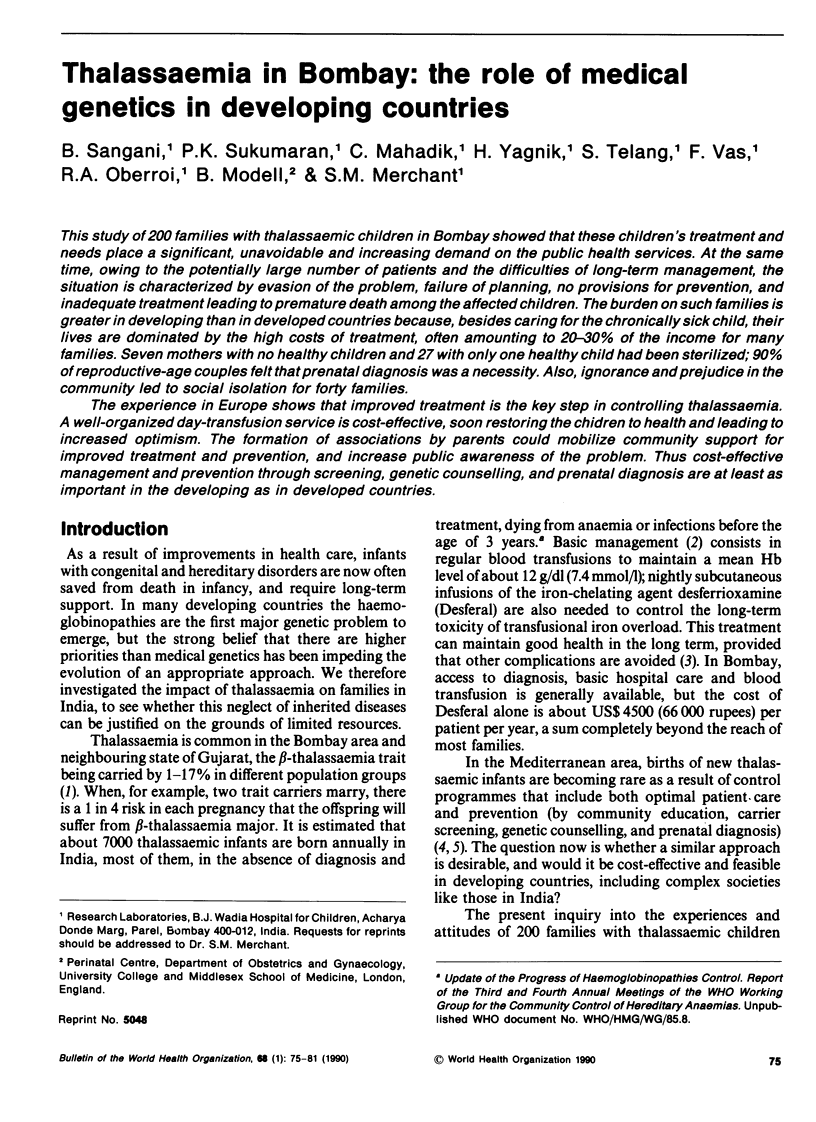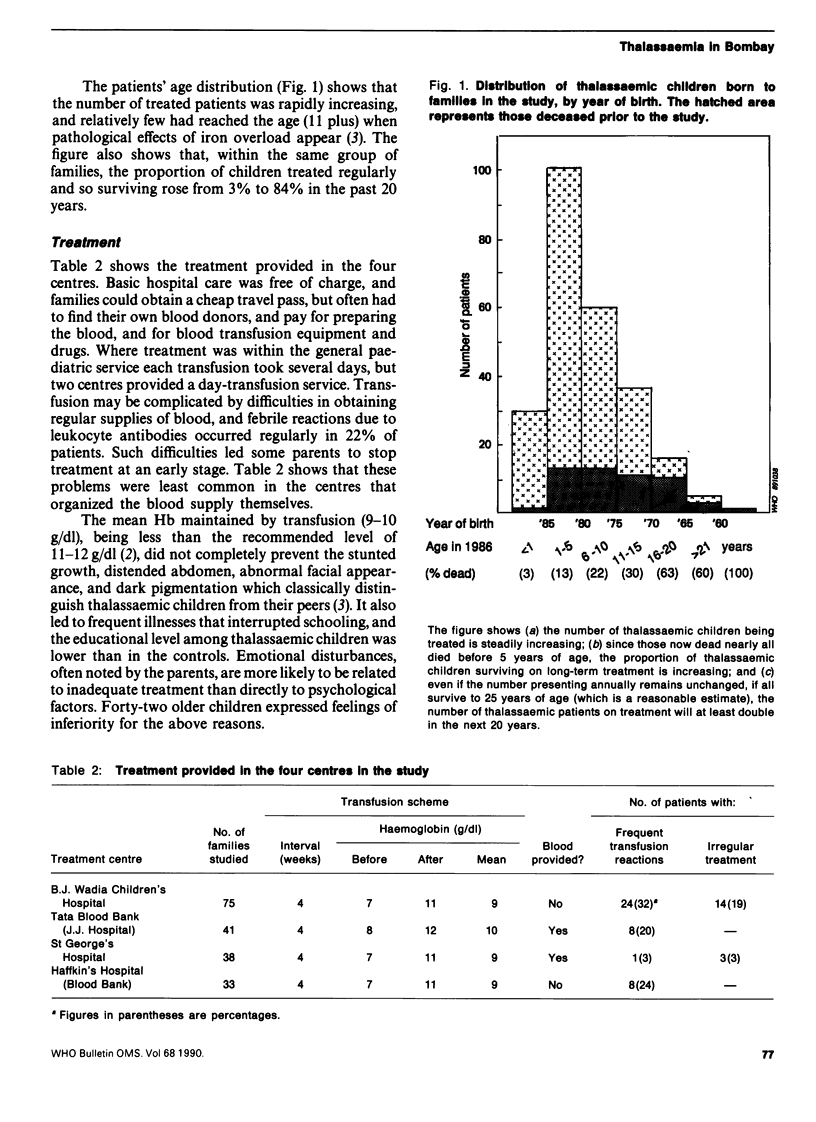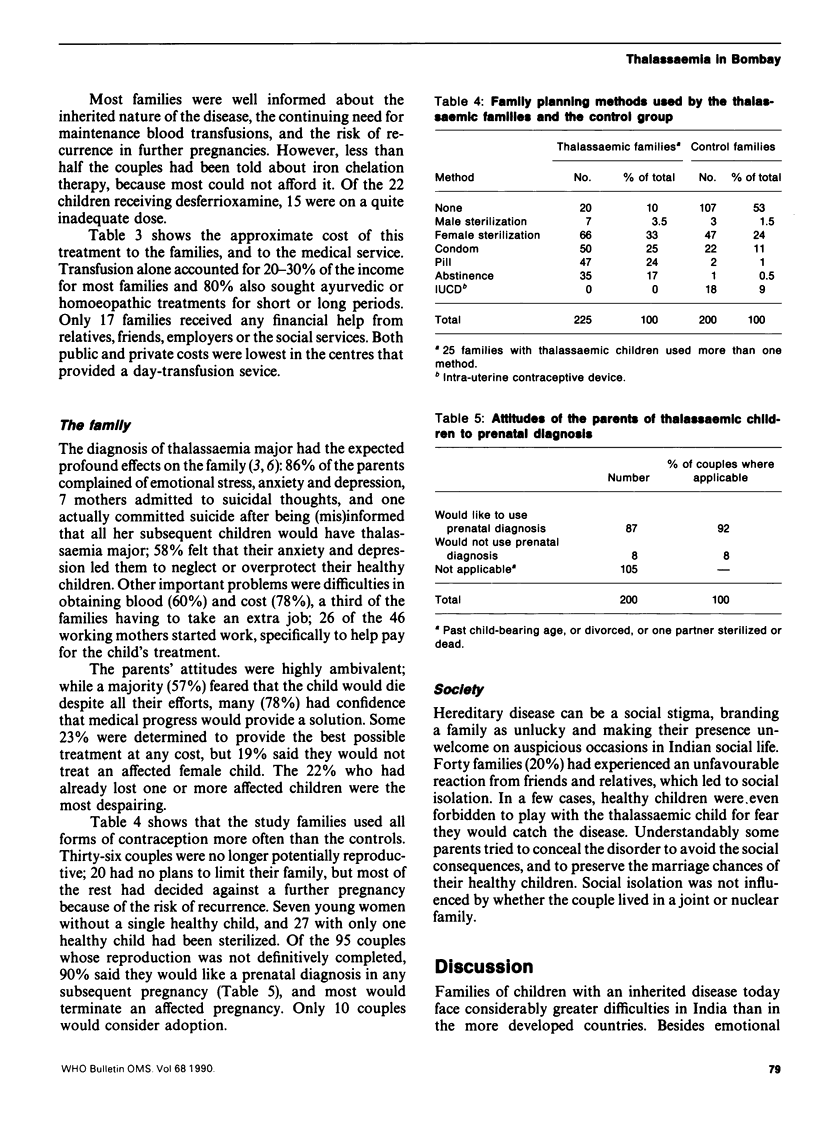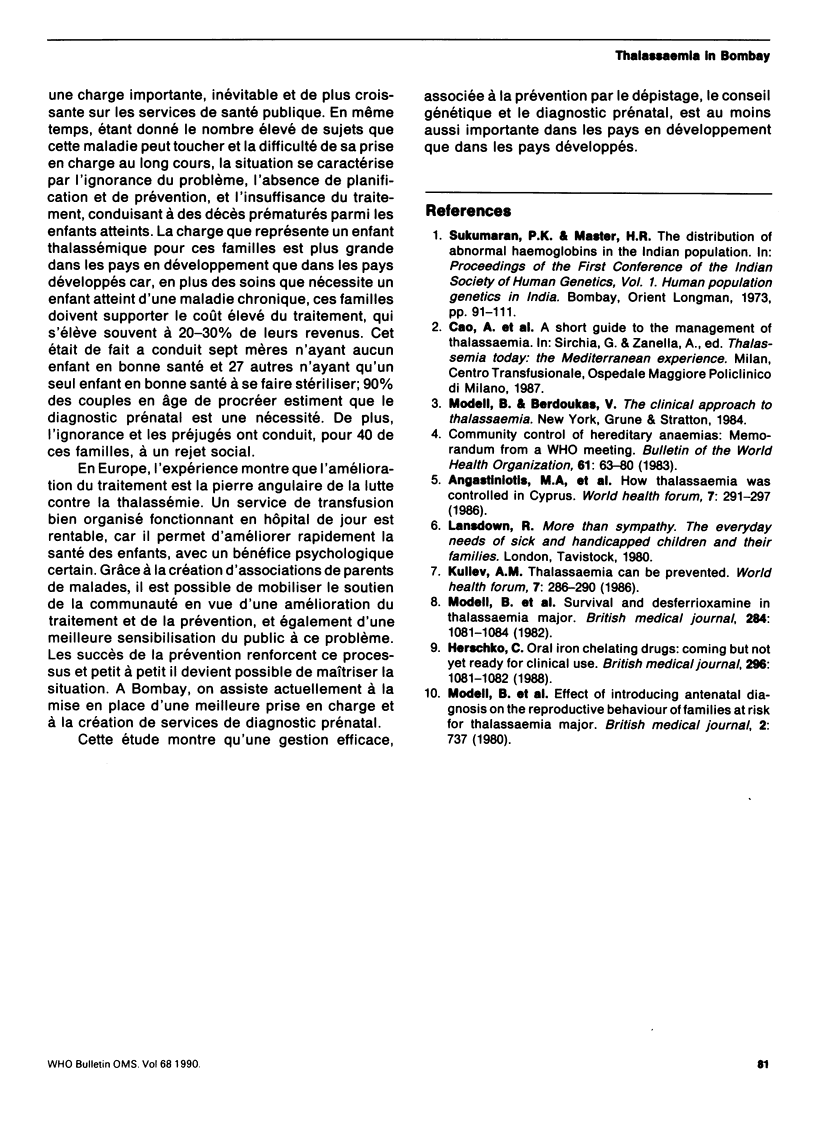Abstract
This study of 200 families with thalassaemic children in Bombay showed that these children's treatment and needs place a significant, unavoidable and increasing demand on the public health services. At the same time, owing to the potentially large number of patients and the difficulties of long-term management, the situation is characterized by evasion of the problem, failure of planning, no provisions for prevention, and inadequate treatment leading to premature death among the affected children. The burden on such families is greater in developing than in developed countries because, besides caring for the chronically sick child, their lives are dominated by the high costs of treatment, often amounting to 20-30% of the income for many families. Seven mothers with no healthy children and 27 with only one healthy child had been sterilized; 90% of reproductive-age couples felt that prenatal diagnosis was a necessity. Also, ignorance and prejudice in the community led to social isolation for forty families. The experience in Europe shows that improved treatment is the key step in controlling thalassaemia. A well-organized day-transfusion service is cost-effective, soon restoring the children to health and leading to increased optimism. The formation of associations by parents could mobilize community support for improved treatment and prevention, and increase public awareness of the problem. Thus cost-effective management and prevention through screening, genetic counselling, and prenatal diagnosis are at least as important in the developing as in developed countries.
Full text
PDF






Selected References
These references are in PubMed. This may not be the complete list of references from this article.
- Modell B., Letsky E. A., Flynn D. M., Peto R., Weatherall D. J. Survival and desferrioxamine in thalassaemia major. Br Med J (Clin Res Ed) 1982 Apr 10;284(6322):1081–1084. doi: 10.1136/bmj.284.6322.1081. [DOI] [PMC free article] [PubMed] [Google Scholar]


